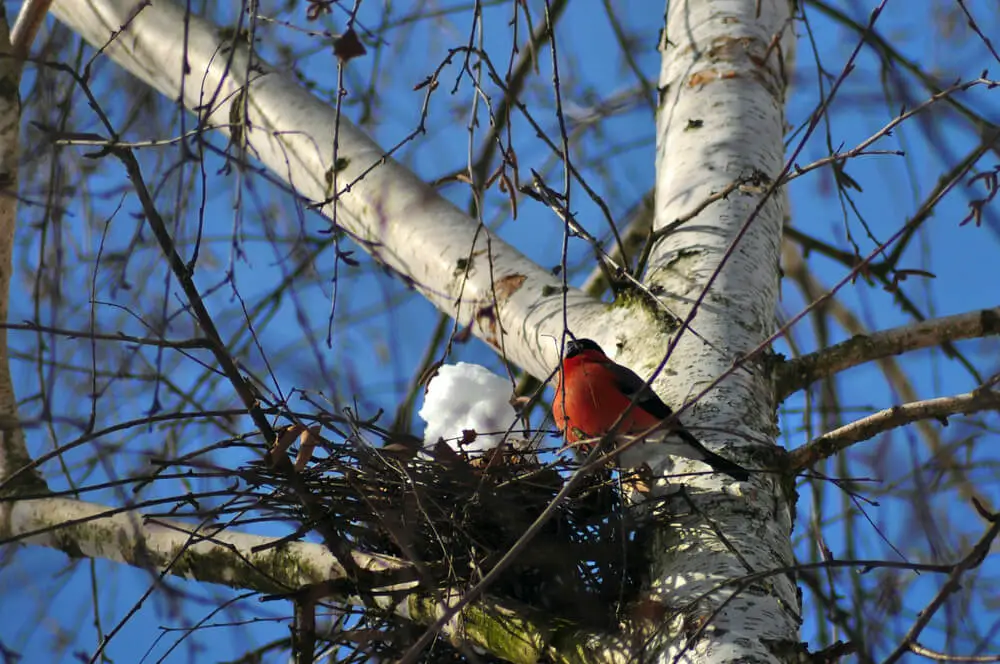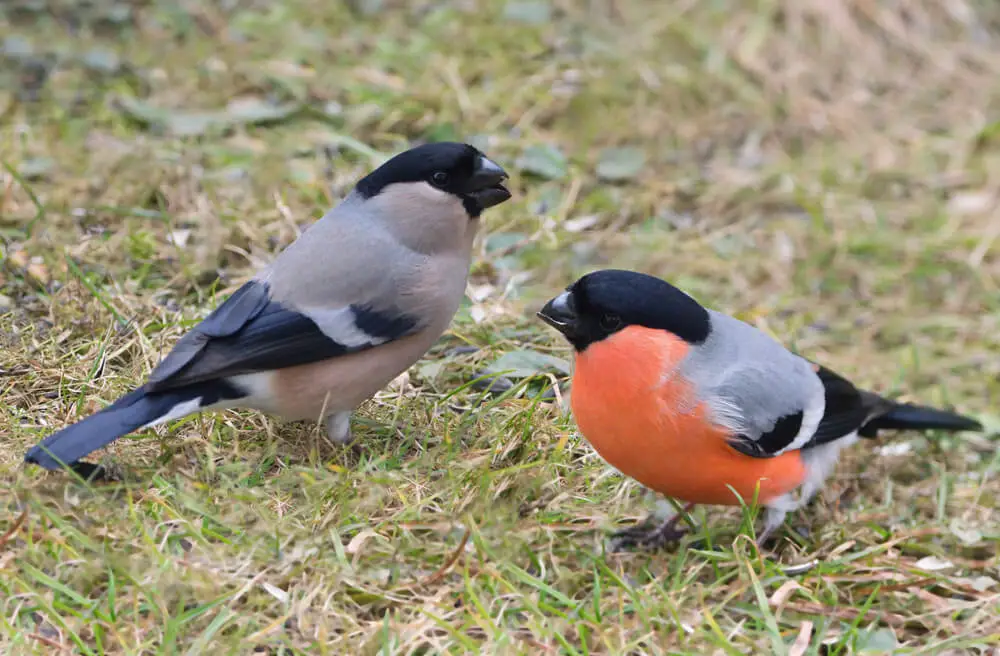Bullfinches are beautiful little birds, but they are so shy and timid that you may never have seen one in your garden. The GB Garden BirdWatch results show that they only visit around 10% of gardens, preferring suburban or rural ones.
If they’re not nesting in our gardens, where do bullfinches nest?

Bullfinches are present across most of Britain and Ireland; they inhabit deciduous woodland with heavy undergrowth, coniferous forests, parks, and large gardens with lots of shrubs and bushes.
They build their nests in these sites but, due to their quiet nature they prefer to be under dense cover.
Table of Contents
Where do Bullfinches Build Their Nests?
Bullfinches build their nests in places offering lots of cover where they can hide and remain insignificant.
Years ago, orchards would be rife with dozens, if not hundreds of bullfinch nests. The birds caused so much devastation to fruit crops that farmers soon put paid to that.
They found other nesting sites in conifer forests, parks, woodland, any places with substantial planting.
Their favourite place to construct a nest is beneath the canopy of a deciduous tree or shrub. They opt for bramble, hawthorn, and blackthorn where possible. If there is nowhere else available, bullfinches will nest in tall hedgerows.
If you live on the edge of woodland or have lots of trees and shrubs in your large garden, then the birds may nest there. Keep an eye out about 4-7ft up from the ground, see if you can spot their coming and going.

The outer nest
It is the female bullfinch that builds the nest, as in many species of songbird. She is nowhere near as meticulous as her cousin, the goldfinch.
She uses small twigs, moss, and lichen to construct the nest on a branch in a mass of dense shrubbery.
It may look delicate and flimsy, but it is strong enough to hold 4-5 eggs, at least twice in the breeding season.
The inner cup
It is the female again that gathers the lining for the nest. She uses fine brown and black rootlets and weaves them together to make a well-insulated, soft bed for her chicks.
The male isn’t totally absent during this process; he protects his mate and the territory so that she can prepare the nest in safety.
He also steps in when it is time to feed the chicks; he will travel far distances to find the best food for his young, secreting it safely in his hidden cheek sacs.
Do bullfinches nest in the garden?
Although there are more than a million breeding pairs of bullfinches in Britain, it is believed that only around 10% of them visit our gardens.
This number has steadily increased since the 1990s when the birds discovered our passion for leaving food out for wild birds. Bullfinches are suckers for black sunflowers and sunflower hearts.
Expansive, rural gardens are more likely to see bullfinches. If there is an abundance of large trees, bushes, and hedgerows, then the likelihood of seeing nesting bullfinches further increases.
Bullfinches very rarely use bird boxes; save those for the tits, robins, and wrens.
Final thoughts
The breeding season for the bullfinch is from May to July, and the best time of spotting the rotund little fellas around. Listen out for their piping whistle call, but whatever you do, if there are bullfinches nesting in the vicinity, protect your fruiting trees and bushes!
